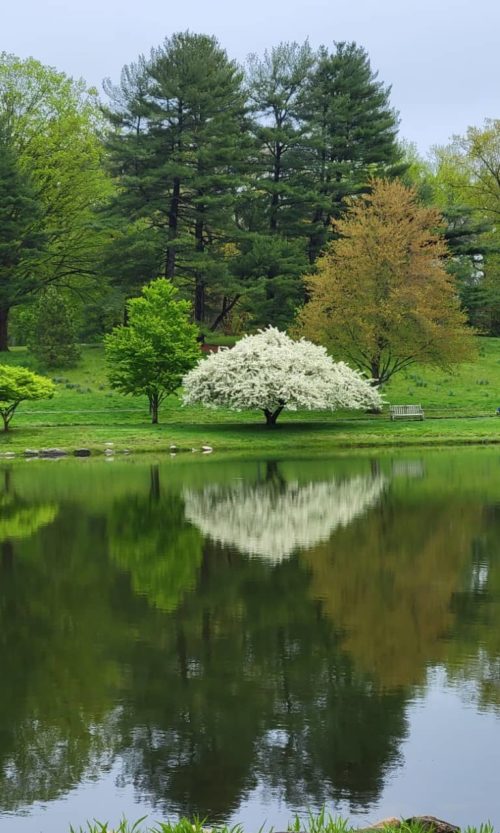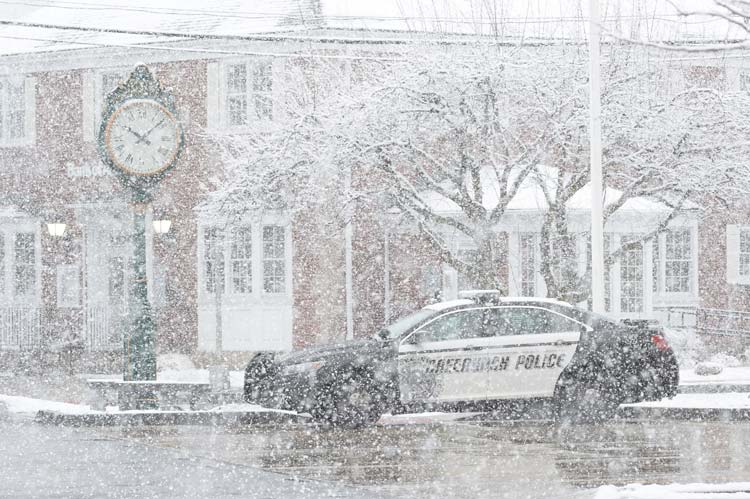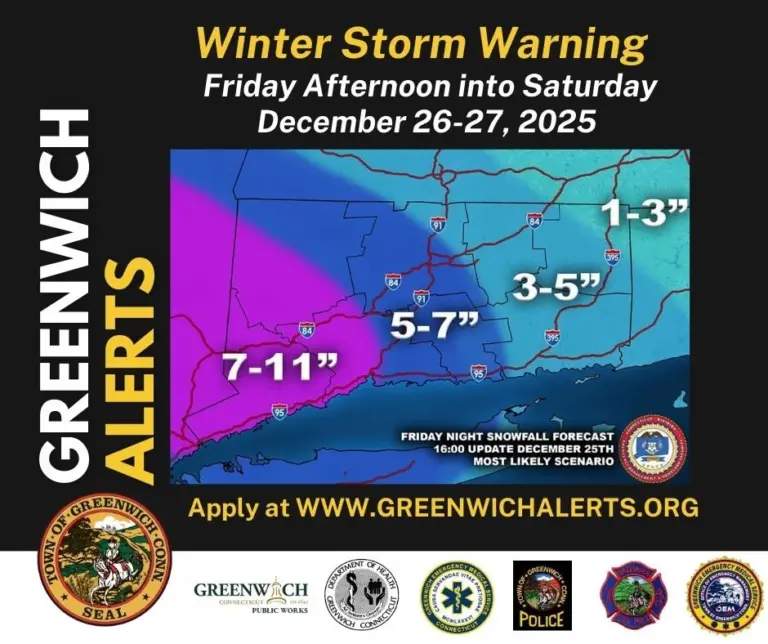By Urling Searle
President, Greenwich Tree Conservancy
Do you know that you live in an Urban Forest?
You Do!

A quick online search on the benefits trees provide yields a remarkable and extensive body of work. In the US alone, trees are estimated to provide an annual economic value of $18.3 billion from their removal of air pollutants, reduction of energy use, holding of carbon and avoidance of pollutant emissions.
Trees are often the welcome patch of green our eyes seek when looking out a nearby window and the familiar backdrop of outdoor enjoyment with family and friends. The trees along our streets and in our parks, and backyards, make up what is termed an urban forest. A collection of woody plant vegetation growing within a city, town or suburb. In Greenwich we are fortunate to have an internationally recognized arboretum.
As the first leaves of spring unfold, they begin absorbing carbon dioxide transforming it into oxygen through photosynthesis. This produces a measurable spring cleaning of our air. When that rumble of thunder brings with it a downpour, trees retain great quantities of rainwater in the ground, allowing it to filter slowly into the soil where it supports life and fills underground aquifers. This greatly reduces the quantity of toxic chemicals that would otherwise run onto neighboring properties, nearby waterways and Long Island Sound.
When you cross over to the tree shaded side of a street or seek out a spot under a tree to relax on a hot summer afternoon you know how well trees cool the air. The shade created by trees lowers the energy bills of surrounding homes and offices. It also lowers the temperature in parking lots that otherwise act as large heat islands.
When layers of trees are planted along roadways, rail lines and highways they can significantly lower the decibel level of traffic noise and help capture and clear air particulates. This improves the quality of life for those that live nearby. In a 2012 US Forest Service study conducted in Baltimore, a 10% increase in tree canopy corresponded to a 12% decrease in crime, and it is well known that “leafier” neighborhoods have higher property values.
Trees offer birds a safe place to raise their young and provides the steady diet of insects their young require. A single white oak hosts over 500 species, and all oaks generously feed the world around them. Entomologist and well-known author Douglas Tallamy recently wrote a book titled The Nature of Oaks: The Rich Ecology of Our Most Essential Native Tree to help us better understand this remarkable genus and urges us to “Plant an Oak!”
While trees remain stationary and silent, they hold tremendous power as dynamic ecosystems providing critical benefits to people and wildlife. They also add beauty, form and structure with their curving branches providing a counterpoint to the linear built environment.
The trees within the urban forest of Greenwich encompass a wide variety of species. There are the well-known natives such as Oak, Maple, Birch, Beech, Cherry, Hemlock and Pine along with more ornamental spring bloomers such as Redbud, Dogwood, Magnolia, Serviceberry and Holly. When understory trees are planted with native shrubs along the edge of woods, they add texture and layers and provide essential habitat for pollinators.
When looking at an urban forest it is important to understand and value all of its parts. Each well-tended mature street tree brings a great host of benefits to those living in surrounding homes and offices. The mature stands of trees in forested parks may provide the greatest ecosystem benefits, yet the trees you choose to plant and how you choose to care for them is of equal importance, as private property trees make up the majority of our town tree canopy.
Connecticut trees face increasing threats and challenges from unwelcome pests such as the Hemlock Wooly Adelgid, the Asian Longhorn Beetle and the newly arrived Beech Leaf Disease. We are also experiencing changing weather patterns with longer periods of drought and stronger storms. When we take care of our trees and plant mainly native trees we are helping to ensure our children and grandchildren will enjoy the same benefits offered to us by our life-sustaining urban forest.
Please join us to learn more about tree care and The Greenwich Tree Conservancy by visiting greenwichtreeconervancy.org.




